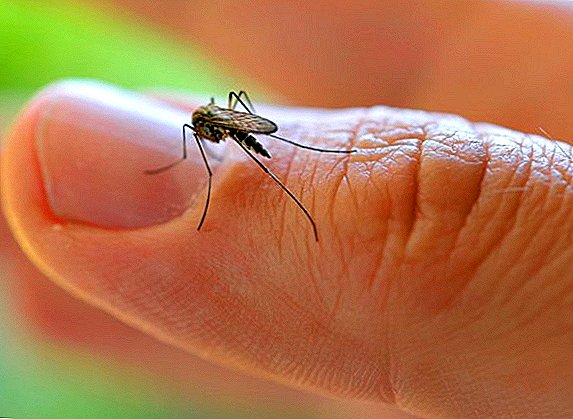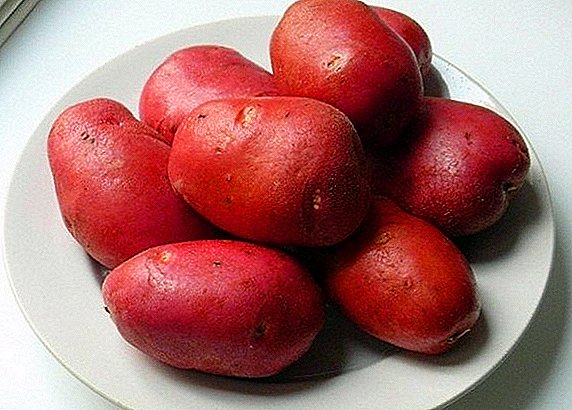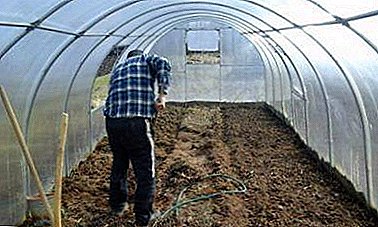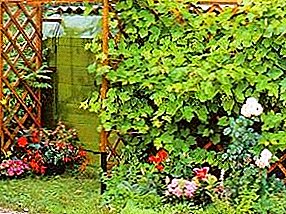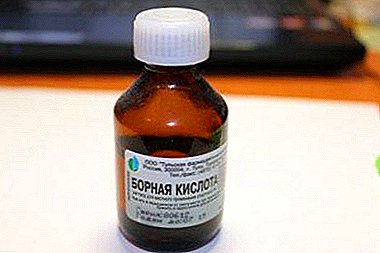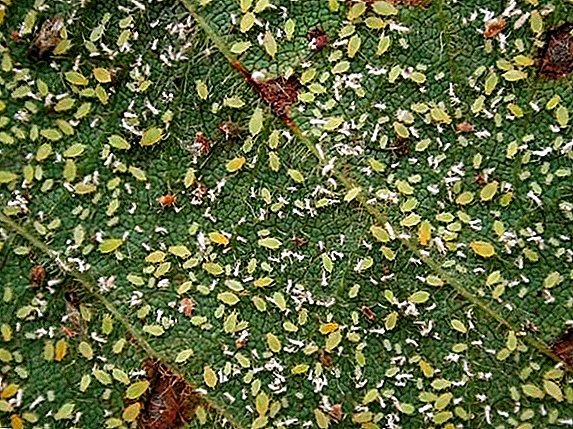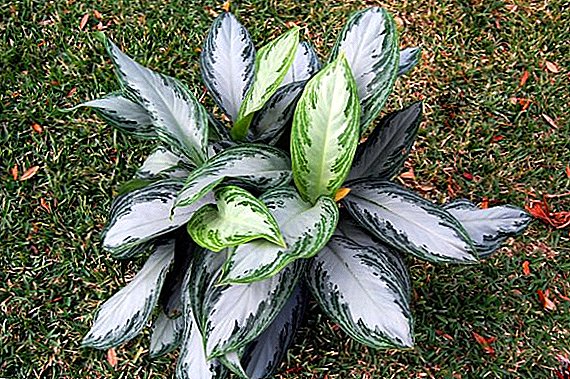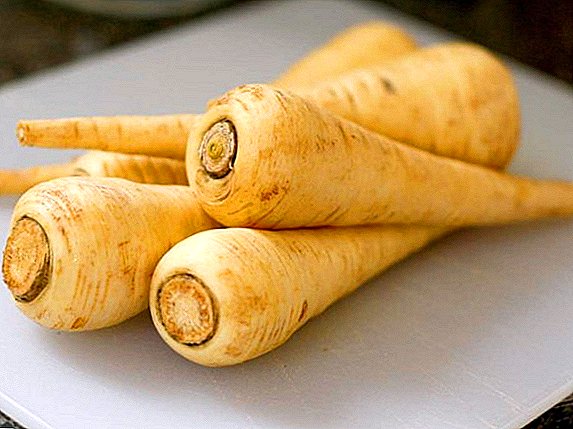
Cyclamens long occupied a worthy place in the collections of flower growers. Plants are valued for their beautiful appearance, long flowering and delicate aroma. European cyclamen is popular in the homeland as a garden crop. In temperate latitudes, it is contained as an indoor plant.
In the article we will tell what kind of plant it is and give a detailed description. You will learn what rules of care you need to follow in order for the flower to grow and develop.
Botanical description and history
European or purple cyclamen, the Latin name Cyclamen purpurascens is one of the species of the family Primrose. Perennial herbaceous plant native to southern Europe. In warm regions it grows in the wild and is cultivated in gardens. Often the plant is called alpine violet or dryakva. Tuber spherical or elongated, with a diameter of up to 10 cm. Roots grow over the entire surface.
Leaves petiolate, heart-shaped. Along the edges of the sheet plate are small notches. The upper part is green with a silvery pattern, the lower - with a purple hue. The flowers are shaped like butterfly wings, their size is 2 cm. The buds are painted in various shades of pink and light violet. Flowering is long, up to 5 months. During this period, alpine violet spreads a pleasant scent.
How to distinguish from the Persian form?
For an experienced grower will not be difficult to distinguish between two types of popular indoor plants. What are the characteristics distinguish flowers:
- Tuber structure - in the Persian species, a flat-rounded tuber with a diameter of up to 15 cm, with roots growing at the bottom. In European cyclamen roots are located throughout the tuber.
- Flowering time - Persian blooms from autumn to late winter, Europe - in spring and summer.
- The size and color of flowers, leaves - European cyclamens are smaller than Persian, the length of flowers is 2 cm, the diameter of leaves is 3-4 cm. Plants are distinguished by a strong, pleasant aroma of flowers. The back side of the leaves of alpine violet violet, in the Persian cyclamen is green.
About gentle beauty and rules of care for the Persian cyclamen, we wrote here.
Watch the video about the differences between European and Persian cyclamen:
A photo
The photo shows the European and Persian cyclamen, you can see the differences between them.
European

Persian

Medicinal properties
Juice and infusion of the roots of the alpine violet helps with various diseases of the female genital organs, rheumatism, neuralgia. Particularly effective are drugs based on cyclamen for the treatment of the respiratory organs. The juice of the plant contains alkaloids, saponins, essential oils, astringents. They have anti-inflammatory and antiseptic effect.
In the treatment of colds, sinusitis and sinusitis drugs are prescribed, containing cyclamen juice "Sinuforte", "Neonox".
Important: The content of toxic substances in the roots of a plant can negatively affect one's well-being. Infusions are used with caution, after consultation with the doctor.
Planting rules
For planting choose a small pot. Capacity should be 2-3 cm higher than the diameter of the tuber. The material has no special requirements, it can be ceramics or plastic. When planting, it is important to remember that the tuber is completely buried. Transplantation is rarely done - once every 3-4 years. The best time is the beginning of March. At the same time, the daughter nodules are separated for reproduction.
Watch the video about cyclamen transplantation rules (landing):
Selection and lighting
 European cyclamen requires careful selection of the location. The flower needs good but diffused lighting. Eastern and western windows are recommended. On the south side, you need high-quality shading to avoid burns on the leaves.
European cyclamen requires careful selection of the location. The flower needs good but diffused lighting. Eastern and western windows are recommended. On the south side, you need high-quality shading to avoid burns on the leaves.
Fresh air is vital to Alpine violet. It is sensitive to odors, the pot can not be put in the kitchen or smoking around it. In late spring, the flower is put on the balcony or in the garden, always in partial shade.
Soil requirements
Substrate should be loose and light. On heavy soils, purple cyclamen lags behind in development. The best option to buy a special balanced mix in the store. The substrate for planting can be prepared independently, you will need:
- leaf earth;
- peat;
- humus;
- coarse sand.
Board: Recommended soil acidity is 5.5-6.5 pH (low acid or neutral).
Home care: tips and tricks
The life cycle of a houseplant is divided into two phases: vegetation and rest. The growing season lasts from spring to late autumn. At this time, the recommended air temperature is 15-18 °. In winter, the flower is transferred to a cool room, where 12-15 °. At rest, the growth points fall asleep, but the leaves remain green.
Withered flower stalks and leaves can not be separated from the tuber. They are removed, twisting around the axis.
 Watering. During the growing season watering is regular and uniform. Do not allow drying and stagnation of water. The best option - the lower watering through the pan. The water is soft, settled, room temperature. The need for moisture is checked on the top layer of soil - if it dries out, it's time to water the flower. In winter, moisture is reduced to a minimum.
Watering. During the growing season watering is regular and uniform. Do not allow drying and stagnation of water. The best option - the lower watering through the pan. The water is soft, settled, room temperature. The need for moisture is checked on the top layer of soil - if it dries out, it's time to water the flower. In winter, moisture is reduced to a minimum.- Top dressing. During the period of active growth and flowering, the plant is fed every other week. Complex mineral fertilizers are used. Preparations for flowering plants are suitable, but the recommended dosage is halved. In winter, feeding is not performed. Top dressing should be low in nitrogen, this element contributes to the rotting of the tuber.
- Transfer. Purple cyclamen negatively react to transplantation. The procedure is performed rarely - 1 time in 3-4 years. It is produced by the method of transshipment, with minimal trauma to the roots. A drainage layer is poured into a larger pot, the free space around the tuber is filled with fresh soil.
Watch the video about the rules of care for cyclamen:
Common diseases and pests
The causative agents of cyclamen are fungi and bacteria. Identification of the disease and timely treatment will help save the plant.
- Wet rot - Bacterial disease, manifested in the rotting of the tuber. Symptoms: lethargy, overhang of leaves and flower stalks, putrid odor from the soil. There is no cure, the flower is destroyed to prevent the spread of infection.
- Fusarium - A fungal disease that affects the flower vessels. Infection occurs through the root system. Symptoms: leaves turn yellow from the tops. Treatment: watering with a base solution, spraying "Topsino-M".
- Gray rot - spores of the fungus are recorded by wind or water. They are affected by plants contained in high humidity and low temperature. Symptoms: gray mold on the leaves, flower stalks and stem darken, then die. Treatment: remove affected parts, treat the plant with systemic fungicide.
The most common enemies of cyclamen are ticks, thrips, aphids, scale insects.
 Cyclamen mite - small pest (0.1-0.3 mm), which cannot be detected during the inspection. Tick colonies develop on the back of the leaves. When a large cluster resembles a layer of dust. The vital activity of pests leads to the deformation of leaves and flowers, twisting the stem, slowing growth. Infected leaves break off, the plant is sprayed with Agravertina solution mixed with liquid soap.
Cyclamen mite - small pest (0.1-0.3 mm), which cannot be detected during the inspection. Tick colonies develop on the back of the leaves. When a large cluster resembles a layer of dust. The vital activity of pests leads to the deformation of leaves and flowers, twisting the stem, slowing growth. Infected leaves break off, the plant is sprayed with Agravertina solution mixed with liquid soap.- Aphid - a common parasite of plants, feeding on their juice. Pests are kept on the back of the leaves, but with significant reproduction become noticeable. The Aktara system insecticide will help to destroy them. Before processing it is recommended to wash the leaves under running water.
- Shchitovka - the insect looks like dark spots on the stem and leaves. It is immobile, eats sitting in one place. Adult flaps are removed with a swab dipped in alcohol. Sprawling larvae are removed by insecticides "Karbofos", "Aktellik".
- Thrips - elongated pest bodies painted white or black. Insects feed on flowers and leaves, causing brown spots and warping. Thrips are mobile, adults fly to neighboring plants. To get rid of the pest will help triple treatment "Condiforom", "Kinmiksom" or "Ditoksom."
Breeding features
Alpine violet breeds branch of affiliated tubers and seeds. The first option is simple in execution and allows you to quickly get a young flowering plant. It is enough to cut the formed tuber and plant it in a separate pot.
It is necessary to use loose neutral soil. Suitable universal mixture for flowering plants, which is added coarse sand. A child tuber is buried completely in the ground.
Seed propagation takes time. At home, will require artificial pollination of flowers. Before planting, seed should be soaked in zircon solution for 20-24 hours. Seeds are sown in a mixture of peat and vermiculite (1: 1), sprinkled with sand on top.
Before the emergence of shoots covered with a dark film. Germination takes about 1 month, periodically moisten the soil. The resulting seedlings bloom in 8-14 months.
Watch the video on reproduction of European cyclamen with tubers and seeds:
Similar plants
Cyclamen genus includes 20 species, among them:
 African cyclamen - a characteristic feature of the plant - the appearance of peduncles before the leaves. The flowering period from spring to autumn, followed by leaf fall and a dormant period. The color of the buds is pink, the leaves are up to 15 cm in diameter.
African cyclamen - a characteristic feature of the plant - the appearance of peduncles before the leaves. The flowering period from spring to autumn, followed by leaf fall and a dormant period. The color of the buds is pink, the leaves are up to 15 cm in diameter.- Collachian Cyclamen - a rare species listed in the Red Book. Flowers are small, leaves are green without a pattern.
- Icy or Neapolitan Cyclamen - its birthplace is the Mediterranean coast of France and Turkey. Serrated leaves with a characteristic silvery pattern.
- Kosam Cyclamen - found on the island of Kos, in the Crimea and the Caucasus. It blooms in spring, the petals are white, pink and reddish. On the leaves of a silver-marbled pattern.
- Cyclamen Cypriot - an endemic species growing on stony soil. Flowers are fragrant, white or pink with purple base. Flowering time from September to January-February.
For more information about all types of cyclamen, you will find in this article, and about popular varieties from the seed mixture "Cyclamen Mix", as well as how and where they can be planted, read here.
Conclusion
European cyclamen is not the most common indoor flower, it is inferior in popularity to the Persian variety. Evergreen shrubs with proper care and compliance with the rules during reproduction will decorate the interior at any time of the year. Not only aesthetic pleasure, but health gives owners purple cyclamen. Tincture and juice from the roots will relieve sinusitis and other diseases.


 Watering. During the growing season watering is regular and uniform. Do not allow drying and stagnation of water. The best option - the lower watering through the pan. The water is soft, settled, room temperature. The need for moisture is checked on the top layer of soil - if it dries out, it's time to water the flower. In winter, moisture is reduced to a minimum.
Watering. During the growing season watering is regular and uniform. Do not allow drying and stagnation of water. The best option - the lower watering through the pan. The water is soft, settled, room temperature. The need for moisture is checked on the top layer of soil - if it dries out, it's time to water the flower. In winter, moisture is reduced to a minimum. Cyclamen mite - small pest (0.1-0.3 mm), which cannot be detected during the inspection. Tick colonies develop on the back of the leaves. When a large cluster resembles a layer of dust. The vital activity of pests leads to the deformation of leaves and flowers, twisting the stem, slowing growth. Infected leaves break off, the plant is sprayed with Agravertina solution mixed with liquid soap.
Cyclamen mite - small pest (0.1-0.3 mm), which cannot be detected during the inspection. Tick colonies develop on the back of the leaves. When a large cluster resembles a layer of dust. The vital activity of pests leads to the deformation of leaves and flowers, twisting the stem, slowing growth. Infected leaves break off, the plant is sprayed with Agravertina solution mixed with liquid soap. African cyclamen - a characteristic feature of the plant - the appearance of peduncles before the leaves. The flowering period from spring to autumn, followed by leaf fall and a dormant period. The color of the buds is pink, the leaves are up to 15 cm in diameter.
African cyclamen - a characteristic feature of the plant - the appearance of peduncles before the leaves. The flowering period from spring to autumn, followed by leaf fall and a dormant period. The color of the buds is pink, the leaves are up to 15 cm in diameter.